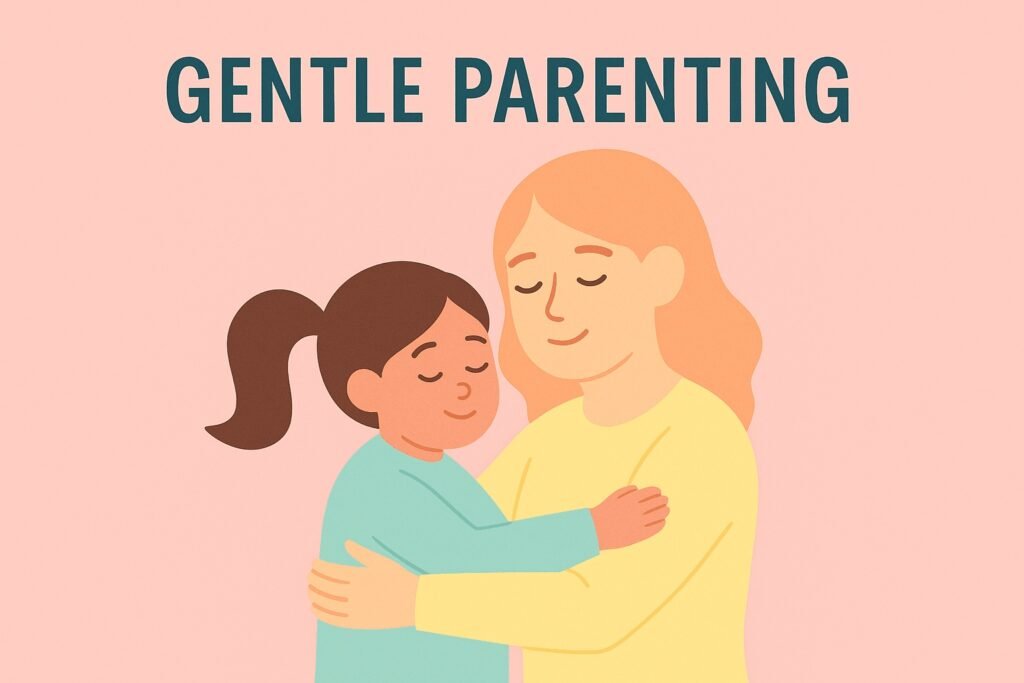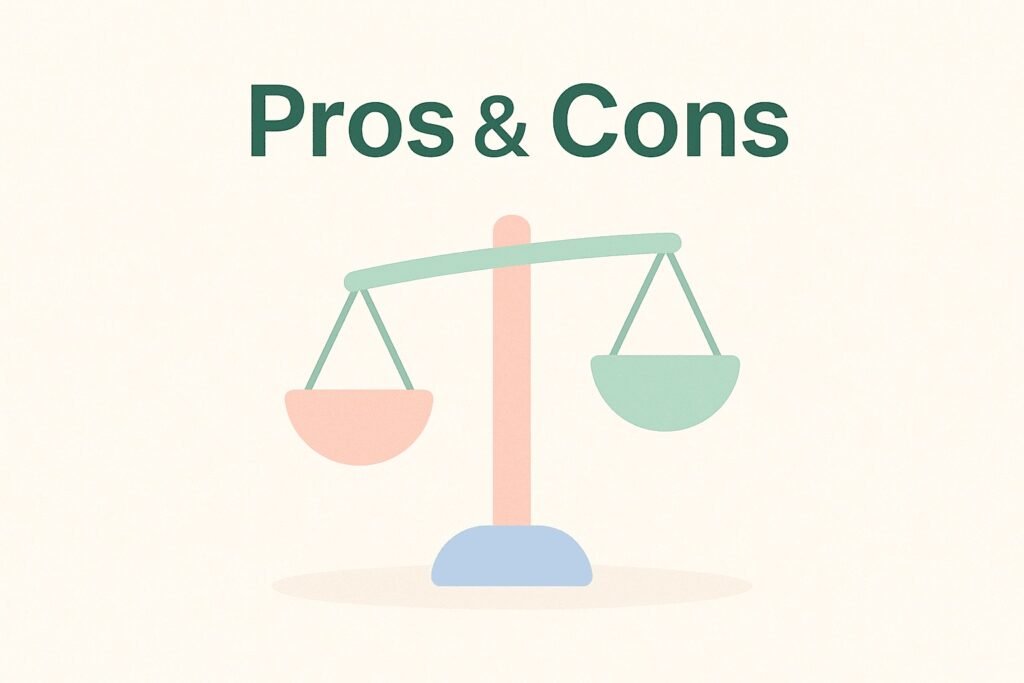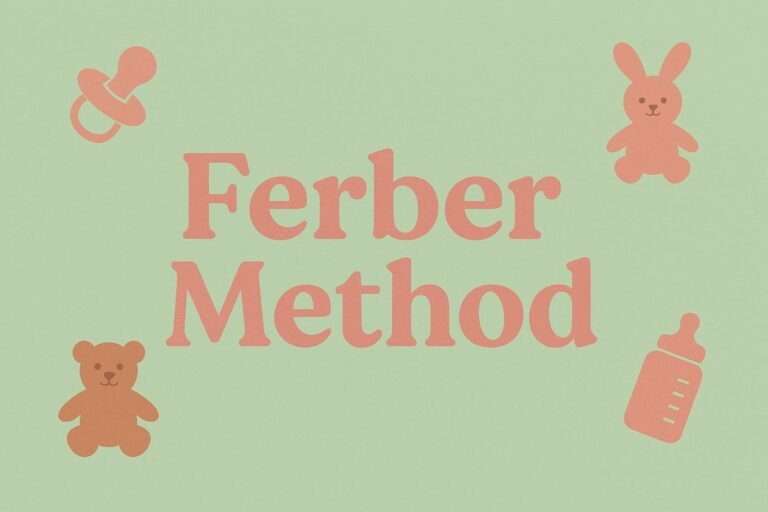Gentle parenting has become one of the most talked-about parenting styles in recent years, with millions of parents seeking a more compassionate approach to raising their children. But what exactly is gentle parenting, and does it really work?
As a mother of two boys and someone who’s spent countless hours researching parenting strategies that actually work, I’m here to give you the complete picture of this increasingly popular approach.
In this comprehensive guide, you’ll discover everything about gentle parenting – from its definition and core principles to practical examples and techniques you can use today. We’ll also explore common misconceptions, compare it with other parenting styles, and examine the pros and cons based on real experiences and research.
By the end of this post, you’ll have a clear understanding of whether gentle parenting is right for your family and how to implement it effectively.
Disclosure: This post contains affiliate links. As an Amazon Associate, I earn from qualifying purchases. I may earn a commission if you click and make a purchase, at no extra cost to you.
Table of Contents
What Is Gentle Parenting?

Gentle parenting represents a shift away from traditional authoritarian approaches towards a more empathetic and collaborative style of raising children. This parenting style has gained significant attention as parents seek alternatives to punitive discipline methods that were common in previous generations.
Unlike permissive parenting, which often involves minimal boundaries, or authoritarian parenting, which relies heavily on rules and punishment, gentle parenting strikes a balance between setting clear expectations and respecting children’s emotional needs. It’s all about guiding children with understanding while maintaining appropriate boundaries and structure.
A 2024 survey by Lurie Children’s Hospital found that 74% of millennial parents practice gentle parenting, with 73% believing they are better parents than previous generations.
Meanwhile, Dr. Janet Lansbury, a renowned expert in child development, emphasizes in her book “No Bad Kids: Toddler Discipline Without Shame” that gentle parenting focuses on connecting with children through respect and understanding while maintaining appropriate boundaries: “When a toddler feels understood, he senses the empathy behind our limits and corrections.”
Gentle Parenting Definition
Gentle parenting is defined as a parenting style that emphasizes empathy, respect, understanding, and boundaries. The approach is built on four main pillars:
- Empathy: Acknowledging and validating children’s feelings
- Respect: Treating children as individuals worthy of dignity
- Understanding: Recognizing developmental stages and limitations
- Boundaries: Setting clear, consistent limits with compassion
Rather than commanding obedience through fear or punishment, gentle parenting focuses on collaboration and building secure attachments. The goal is to raise emotionally intelligent, confident children who understand right from wrong because they’ve internalized values, not because they fear consequences.
Research shows that children raised with responsive, empathetic parenting (which aligns with gentle parenting principles) develop better social skills and emotional regulation compared to those raised with authoritarian methods.
In specific, according to a 2023 study, children from families with more authoritative parenting styles (similar to gentle parenting) demonstrated significantly higher levels of social competence and better emotion management skills.
Other research has revealed that authoritative parenting approaches result in children with stronger self-regulation abilities, higher self-confidence, and better peer relationships.
Gentle Parenting vs Permissive Parenting
While both gentle parenting and permissive parenting may seem similar at first glance – as both avoid harsh punishments and prioritize children’s feelings – they differ significantly in key areas.
Let’s take a look at the main similarities and differences between the two approaches.
Similarities
- Avoid physical punishment and harsh criticism
- Value children’s emotional well-being
- Encourage open communication
- Aim to build positive parent-child relationships
Key Differences
- Boundaries: Gentle parenting maintains clear, consistent boundaries, while permissive parenting typically lacks such a structure.
- Discipline approach: Gentle parenting uses natural consequences and redirection, whereas permissive parenting often avoids consequences altogether.
- Expectations: Gentle parenting sets age-appropriate expectations. In contrast, permissive parenting may have few or inconsistent expectations.
- Long-term goals: Gentle parenting aims to develop self-discipline, but permissive parenting may inadvertently hinder this development.
Research from multiple studies shows that children raised with gentle parenting techniques develop better self-regulation skills compared to those in permissive households. Teachers consistently report fewer behavioral problems and better classroom cooperation in children whose parents practice these supportive approaches.
Gentle Parenting vs Authoritative Parenting
Gentle parenting and authoritative parenting are frequently confused, with the two terms often being used interchangeably. That’s because the two types of parenting share more similarities than differences, leading some experts to consider gentle parenting a modern adaptation of authoritative parenting. Still, they are generally considered two distinct approaches, which need to be analyzed separately.
Let’s have a look at the main similarities and differences between the two methods.
Similarities
- Provide balance of warmth and structure
- Set clear expectations and boundaries
- Use reasoning and explanation
- Encourage independence within limits
- Prioritize the parent-child relationship
Key Differences
- Emotional focus: Gentle parenting places stronger emphasis on emotional validation and co-regulation than the authoritative approach.
- Control mechanisms: Authoritative parenting may use more conventional rewards and consequences, while gentle parenting leans towards natural consequences.
- Parent role: Gentle parenting views the parent more as a guide, and authoritative parenting maintains a clearer authority figure role.
- Communication style: Gentle parenting emphasizes collaborative problem-solving, whereas authoritative parenting may be more directive.
Both styles produce well-adjusted children, but gentle parenting may offer advantages for children who need extra emotional support or struggle with traditional authority structures.
5 Examples of Gentle Parenting
Next, let’s explore real-life scenarios where gentle parenting principles can be applied effectively. These examples demonstrate how this approach works in everyday situations you might encounter with your own children.
Example 1: Morning Routine Meltdown
Situation: Your 5-year-old has a meltdown because you served breakfast in the wrong bowl.
Gentle Parenting Response:
- Acknowledge the feelings: “I see you’re really upset about the bowl. It’s hard when things don’t go the way we expect.”
- Offer validation: “I understand. You really like your blue bowl.”
- Present options: “We can transfer your cereal to the blue bowl, or we can save it for lunch. What would help you feel better?”
- Maintain boundaries: “We need to eat breakfast now so we’re not late, but I want to help you feel comfortable.”
This approach validates emotions while maintaining the necessary routine, teaching problem-solving skills without escalating the situation.
Example 2: Grocery Store Tantrum
Situation: Your toddler has a full meltdown in the grocery store because you won’t buy them candy.
Gentle Parenting Response:
- Get on their level physically
- Validate feelings: “You really want that candy, and you’re angry that I said no.”
- Offer understanding: “I get it. There are so many yummy-looking things here.”
- Provide alternatives: “Today we’re buying healthy snacks. Would you like to choose some apples or some berries?”
- Stay calm and consistent: “I know you’re mad at me right now, and that’s OK. Let’s keep shopping.”
This maintains your boundary while acknowledging your child’s disappointment, teaching them how to handle situations in which they don’t get what they want which happens often in life.
Example 3: Sibling Conflict
Situation: Your children are fighting over a toy.
Gentle Parenting Response:
- Separate them calmly: “I can see you both want to play with this toy.”
- Acknowledge both perspectives: “Sam, you were playing with it first. Emma, you really want a turn too.”
- Guide problem-solving: “How can we solve this problem together? Maybe taking turns? Or finding another toy?”
- Support their solution: “Great job coming up with a plan. Let’s see how it works.”
This approach teaches conflict resolution, empathy, and negotiation skills – all crucially important life skills – rather than imposing a solution from the outside which might not suit any of the involved parties.
Example 4: Bedtime Resistance
Situation: Your child refuses to go to bed, claiming they’re not tired.
Gentle Parenting Response:
- Connect first: “I hear you saying you’re not tired. Let’s get ready for bed together.”
- Offer choices within boundaries: “Would you like to brush your teeth first or put on your pajamas first?”
- Validate while maintaining routine: “I know you wish you could stay up later. Our bodies need rest to grow and to be able to play tomorrow.”
- Support the transition: “Let’s read one more story in bed to help your body and mind wind down.”
This acknowledges their feelings while gently enforcing necessary boundaries for health and wellbeing as well as for maintaining a routine.
Example 5: Homework Struggles
Situation: Your child is frustrated with homework and wants to quit.
Gentle Parenting Response:
- Empathize: “This does look challenging. I can see why you’re frustrated.”
- Problem-solve together: “What part is giving you the most trouble? Let’s break it into smaller pieces.”
- Encourage without pressure: “You’ve solved hard problems before. Let’s try a different approach.”
- Offer support: “I’m here to help if you need me. Should we take a short break and try again?”
This approach builds resilience and problem-solving skills while providing emotional support.
4 Common Misconceptions About Gentle Parenting
As gentle parenting gains popularity in modern parenting styles, a number of misconceptions have emerged that can confuse parents and critics alike.
Let’s address the most common myths with an open mind and clarify what gentle parenting really entails.
Misconception 1: It Means Being Permissive
The Myth: Many believe that this style of parenting is equal to being overly permissive and allowing your child to do whatever they please.
The Reality: Gentle parenting is not about giving in to every demand that your child has or avoiding all conflict. It’s about setting firm boundaries, with kindness and respect. Gentle parents do say “No” when it’s necessary, but they explain why and offer alternatives. They maintain necessary structure and expectations while considering their child’s perspective. In a way, via this method, parents treat their child (almost) like an adult who just requires a bit of support to be enabled to solve their own problems.
Research illustrates the important differences between gentle parenting and permissive parenting. Children raised with permissive parenting tend to exhibit impulsivity, difficulty with self-regulation, and challenges with boundaries. In contrast, gentle parenting maintains clear boundaries while responding empathetically to children’s needs.
Misconception 2: It Spoils Children
The Myth: Children end up being overly spoilt and thinking that everything is allowed when they are raised by parents who adopt this approach.
The Reality: Gentle parenting doesn’t spoil children. Instead, it nurtures emotionally secure, well-regulated kids.
Studies show that children raised with gentle parenting techniques demonstrate:
- Higher emotional intelligence scores
- Better peer relationships
- Stronger problem-solving abilities
- Greater capacity for empathy
Dr. Laura Markham, author of “Peaceful Parent, Happy Kids,” emphasizes that empathetic parenting creates connection that leads to cooperation and self-regulation, not entitlement. Her approach shows that children who feel understood and supported develop stronger emotional regulation skills.
Misconception 3: It Takes Too Much Time
The Myth: This type of parenting requires excessive amounts of time which most parents don’t have, trying to juggle between work, family, and all other obligations.
The Reality: While gentle parenting does require patience and presence in the moment, it often saves time in the long run.
By teaching children to understand and manage their emotions early, parents witness:
- Fewer daily power struggles
- Quicker conflict resolution over time
- Children who can self-regulate better
- More cooperative behavior as children mature
Many parents who adopt this method report that after an initial adjustment period, interactions with their children become smoother and more harmonious.
Misconception 4: It Doesn’t Work for Strong-Willed Children
The Myth: Many parents believe that this approach cannot be applied to strong-willed, independent children as it clashes with their personality.
The Reality: Gentle parenting can be particularly effective for strong-willed children. These children often respond better to explanations and collaboration than to authoritarian commands.
The approach is particularly effective with children who value their independence because it:
- Respects their need for autonomy while maintaining boundaries.
- Channels their determination into positive directions.
- Teaches negotiation skills within appropriate limits.
- Reduces the power struggles that authoritarian parenting can create.
Developmental psychologist and author of “The Spirited Child” Dr. Mary Sheedy Kurcinka notes that strong-willed children raised with gentle parenting often become confident, capable leaders rather than defiant rebels.
Does Gentle Parenting Work?
This is a question many parents ask, and it deserves a thoughtful, nuanced answer based on logic and evidence. From the start, it’s important to emphasize that the effectiveness of gentle parenting depends on various factors, including consistency, family circumstances, cultural background, previous experiences, and individual child temperament.
How Gentle Parenting Actually Works
Gentle parenting operates on the principle of building a secure attachment while teaching children emotional regulation and problem-solving skills.
Here’s how it works in practice:
The Brain Science: When parents respond with empathy to a child’s emotions, it helps develop the prefrontal cortex, which is the part of the brain that is responsible for self-regulation and decision-making. The work of Dr. Dan Siegel, a renowned neuropsychiatrist, points out that children who receive consistent empathetic responses develop stronger neural pathways for emotional control.
The Real-World Application:
- Initial Phase: More time-intensive as children learn new ways of communicating
- Adjustment Period: Parents report increased cooperation as children feel heard
- Long-term Results: Better emotional intelligence and self-discipline
Success Rates:
- 46% of Americans believe that gentle parenting is effective.
- Studies show that children whose parents practice this method exhibit better social skills and more emotional security than children raised following traditional practices.
- Research indicates that children face fewer behavioral problems than those raised with less attachment parenting techniques.
- Gentle parenting applied to toddlers leads to a lower risk of developing anxiety.
How Gentle Parenting Affects Kids
Just like any other aspect of parenting, being gentle with your children brings along both benefits and some potential downsides. Before deciding whether this is the right approach to bringing up your kids, it’s important to consider both sides of the equation and make an informed decision.
Positive Effects:
- Emotional Intelligence: Children develop better emotional awareness and self-regulation.
- Secure Attachment: This approach helps form stronger parent-child bonds and better relationships overall.
- Problem-Solving Skills: Children are given the opportunity to learn to work through challenges independently.
- Self-Esteem: Children feel valued and respected as individuals, which helps build their self-esteem.
- Academic Performance: Studies show improved focus and learning retention.
- Social Skills: Gentle learning helps establish better peer interactions and conflict resolution skills.
Potential Challenges:
- Initial Adjustment: Some children may test boundaries, at least initially, but usually they learn what is allowed and what is not within a reasonable period of time.
- Slower Immediate Compliance: At the beginning, it might take longer for children to follow directions.
- Peer Pressure: Children who are being raised with gentle parenting could struggle in authoritarian environments such as school or sports.
- External Criticism: Both parents and children may face judgment from those unfamiliar with the approach.
Dr. Ross Greene’s research indicates that while gentle parenting may initially seem slower, children ultimately develop better life skills and emotional resilience than those raised with traditional methods.
Gentle Parenting Pros and Cons

Understanding both the benefits and limitations of gentle parenting helps you make a better decision for your family.
So, let’s take a look at the main advantages and disadvantages of this approach:
Pros
Gentle parenting offers numerous benefits for both children and parents:
- Builds Emotional Intelligence: Children learn to identify, express, and manage emotions effectively.
- Strengthens Parent-Child Bond: It creates deep, trusting relationships based on respect and support.
- Develops Problem-Solving Skills: Children learn to find solutions rather than avoid problems.
- Reduces Power Struggles: Cooperation replaces confrontation in daily interactions.
- Promotes Self-Discipline: Children internalize values rather than just following rules.
- Improves Long-term Outcomes: It leads to better academic, social, and professional success.
- Enhances Mental Health: It results in lower rates of anxiety, depression, and behavioral issues, both during childhood and later on in life.
- Teaches Empathy: Children learn to understand and consider others’ perspectives and feelings.
- Supports Individual Development: It teaches children to respect unique personalities and individual needs.
- Creates Positive Family Atmosphere: It brings more harmony and less stress at home.
Cons
Like any parenting approach, gentle parenting has potential drawbacks, the main ones including:
- Time-Intensive: It requires more patience and mental energy, especially initially.
- Consistency Challenges: it might become difficult to maintain when parents are overtired or stressed.
- External Pressure: It may receive criticism from family, friends, or society.
- Limited Immediate Control: This method does not support the achievement of quick compliance in urgent situations.
- Requires Extensive Parent Self-Regulation: Parents must manage their own emotions well before they are able to help their child do so.
- May Not Suit All Temperaments: Some children or parents may prefer clearer structure, so this method might prove ineffective.
- Challenging in Public: It can be harder to implement in social situations.
- Learning Curve: Parents need education and practice to master the gentle parenting techniques.
- Not Always Effective Alone: This approach may need to be combined with other strategies to boost results.
- Resource Intensive: It often requires books, classes, or coaching for getting into the right mindset and learning the necessary techniques for success.
How to Gentle Parent: 8 Techniques That Really Work
Ready to put gentle parenting into practice?
Here are proven techniques that parents report work effectively in real-life situations:
- Name and Validate Emotions: “You’re feeling frustrated because the tower fell down. Building can be tricky!” This simple phrase helps children identify their feelings and feel understood by the people who matter the most in their life.
- Offer Limited Choices: “Would you like to wear the red shirt or blue shirt?” Something as easy as this gives autonomy within boundaries, reducing power struggles.
- Use Natural Consequences: “When we don’t put toys away, we might step on them and break them.” Explaining the reasoning behind chores or other things teaches the principle of cause and effect in an easy, comprehensible manner.
- Model Calm Behavior: Take deep breaths during stressful moments. Children mirror your behavior including emotional regulation.
- Connect Before Correcting: Start discipline with a hug or gentle touch. Connection activates the learning brain.
- Reframe “No” with Information: Instead of just “No!”, try something along the lines of “Candy isn’t a breakfast food, but you can have some after dinner.”
- Problem-Solve Together: “We want different things. How can we make this work for everyone?” This approach teaches the importance and skills of negotiation and empathy.
- Set Predictable Routines: Structure reduces anxiety and power struggles. Children feel secure knowing what to expect.
These techniques become more and more natural with time and with practice. Remember, in parenting – just like in everything else – consistency matters more than perfection.
5 Best Gentle Parenting Books
As I’ve already mentioned above, achieving real results with gentle parenting requires some education and practice for people who are not psychologists (like most of us). The good news for parents who are looking to improve their parenting style to build stronger and more positive relationships with their children and to set them up for emotional success is that there are plenty of resources that can help you learn everything you want to know on the topic.
Here are some of the most trusted resources for learning gentle parenting techniques based on my own reading and the reviews and recommendations of other parents:
1. “How to Talk So Kids Will Listen & Listen So Kids Will Talk” by Adele Faber and Elaine Mazlish
As a classic guide, “How to Talk So Kids Will Listen & Listen So Kids Will Talk” offers practical communication strategies that form the foundation of gentle parenting. The authors present simple phrases and approaches that help parents connect with children while maintaining authority. What makes this book special is its comic-strip examples that make concepts easy to understand and implement immediately. It’s sold over 3 million copies and remains relevant 40 years after its first publication.
2. “No-Drama Discipline” by Daniel J. Siegel and Tina Payne Bryson
Combining neuroscience with practical parenting advice, “No-Drama Discipline” explains the brain science behind children’s behavior and emotions. The authors offer a step-by-step approach to discipline that builds the brain rather than punishing behavior. What sets it apart from the myriad of parenting books is the scientific backing paired with real-world applications. Parents particularly appreciate the “connect and redirect” technique that this book promotes for handling challenging behaviors.
3. “Peaceful Parent, Happy Kids” by Dr. Laura Markham
This comprehensive guide – “Peaceful Parent, Happy Kids” – focuses on parent self-regulation as the foundation for effective gentle parenting. Dr. Markham provides specific strategies for managing parental emotions and responding thoughtfully to children’s needs. The book stands out for its emphasis on the parent’s emotional state and includes practical exercises for developing emotional intelligence. It’s particularly helpful for parents who struggle with their own reactions.
4. “The Whole-Brain Child” by Daniel J. Siegel and Tina Payne Bryson
Although not specifically about gentle parenting, “The Whole-Brain Child” book provides essential understanding of how children’s brains develop. It offers 12 revolutionary strategies for nurturing healthy brain development. What makes it unique is the illustrations and “refrigerator sheet” summaries that make complex neuroscience accessible. Parents report that understanding brain development helped them respond more empathetically to challenging behaviors exhibited by their children.
5. “How to Have a New Kid by Friday” by Dr. Kevin Leman
While taking a slightly different approach, “How to Have a New Kid by Friday” offers quick, actionable strategies that align with gentle parenting principles. Dr. Leman focuses on changing parent behavior to transform family dynamics. The book stands out for its practical, no-nonsense approach and immediate results. Many parents use it alongside gentler resources for situations requiring faster behavior changes.
Final Thoughts
Gentle parenting represents a thoughtful approach to raising emotionally healthy, well-adjusted children. Throughout this guide, we’ve explored how this parenting style balances empathy with boundaries, offering a potentially more effective alternative to both permissive and authoritarian approaches. The key principles – empathy, respect, understanding, and clear boundaries – create a structured framework for nurturing children’s emotional intelligence while providing sufficient flexibility to meet the needs of diverse children in a wide range of challenging situations.
The evidence suggests that gentle parenting, when consistently applied, produces children with better emotional regulation, stronger problem-solving skills, and healthier relationships. While it requires patience and dedication on behalf of the parent, many find that the long-term benefits far outweigh the initial challenges. Remember that every family is unique, and what matters the most is finding an approach that aligns with your values and meets your children’s needs.
What has been your experience with gentle parenting? Are you currently implementing these techniques, or are you considering this approach? Have you noticed changes in your children’s behavior or your family dynamics? Share your thoughts, challenges, and success stories in the comments below. Your experiences could help other parents on their parenting journey.







